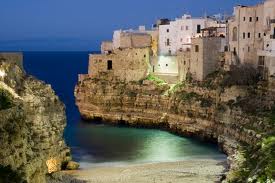An E. coli O26 outbreak appears to be spreading in the Apulia region of Italy, with 16 cases of hemolytic uremic syndrome, including14 children aged 10-to-36 months, a 15-year-old boy and an adult.
The most recent case occurred in Calimera, where an 11-month-old girl was admitted to hospital with symptoms that many now have learned to  recognize: diarrhea often characterized by the presence of blood in the stool, vomiting and abdominal pain.
recognize: diarrhea often characterized by the presence of blood in the stool, vomiting and abdominal pain.
Something may be lost in translation here, but the story says:
From the information gathered through the statements of the parents, children affected by Seu had eaten fruit (watermelon, in particular), dairy products and salad. In some cases, little had been spoon-fed after the parent had come into contact with the meat, maybe the one that bought a sandwich stuffed in one of the many stalls that fill the streets of Puglia during the summer. In short, too many elements, but no certainty, except that which is coming from sea water bacteria.
Perhaps, more likely, from the wells from where it draws water to irrigate the fields, but the controls are still in progress. Yet in recent days had spread the rumor that to facilitate the contagion might just be the sea water. A circumstance which had raised fears sudden emptying of the seaside resorts and a stampede of tourists from Puglia.
This has not happened, as confirmed by Fabrizio Santorsola, regional vice president of Assobalneari Puglia, federated Federbalneari, and holder of the beach and restaurant “Santos» Savelletri, on the coast of Fasano. “Our guests, and those establishments that belong to the association – he says – did not show any fear.
 Last summer, Apulia, a region in Italy’s south, was hit by a hemolytic uremic syndrome (HUS) outbreak with 20 cases; it was eventually linked to dairy products.
Last summer, Apulia, a region in Italy’s south, was hit by a hemolytic uremic syndrome (HUS) outbreak with 20 cases; it was eventually linked to dairy products.







